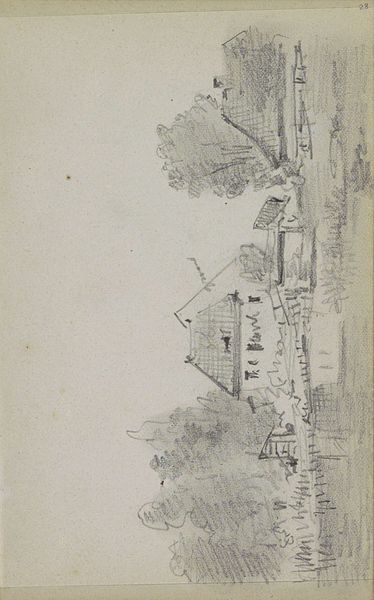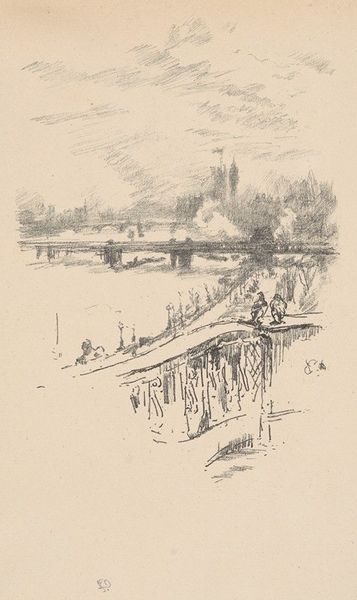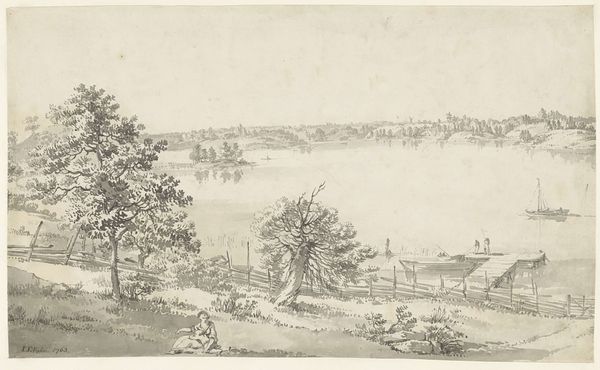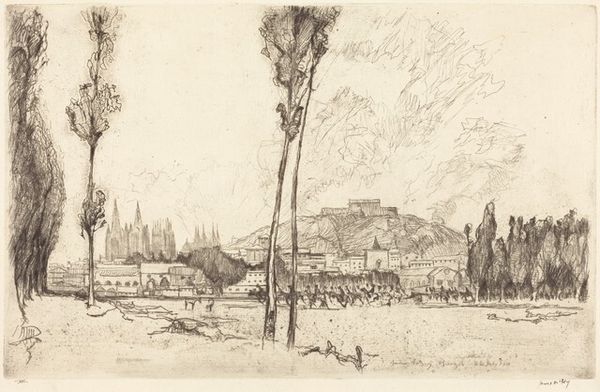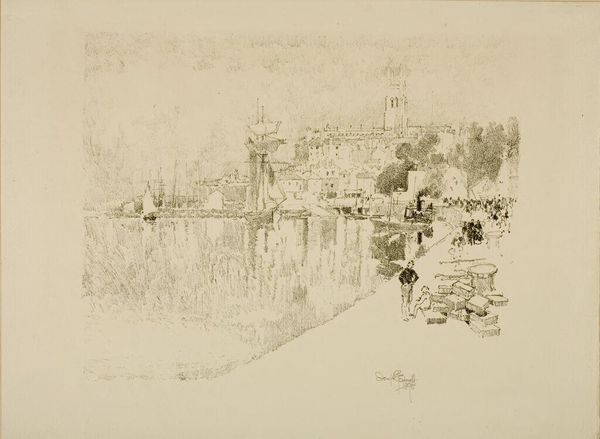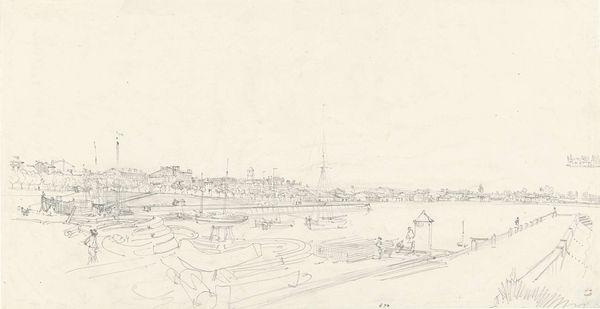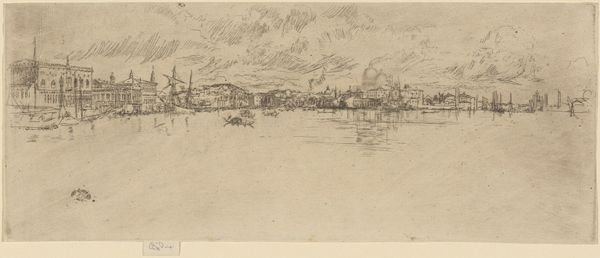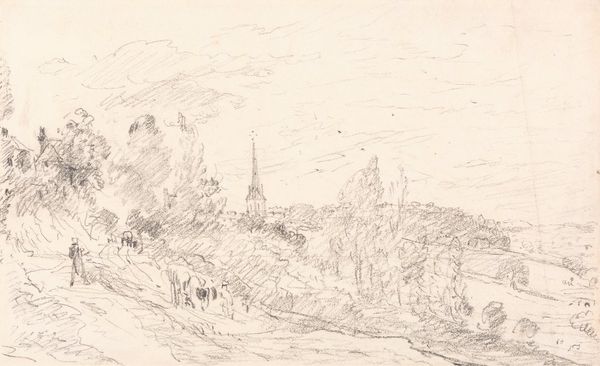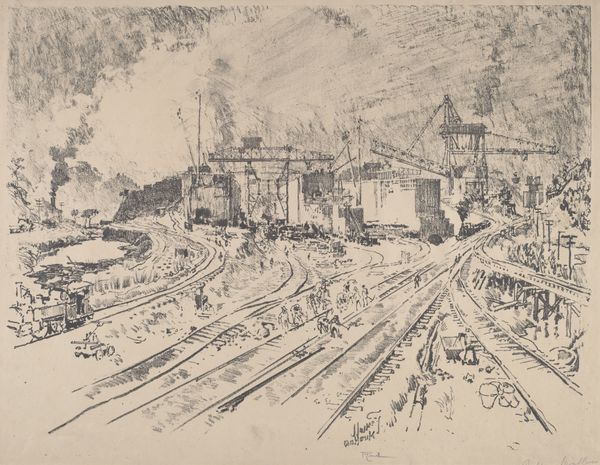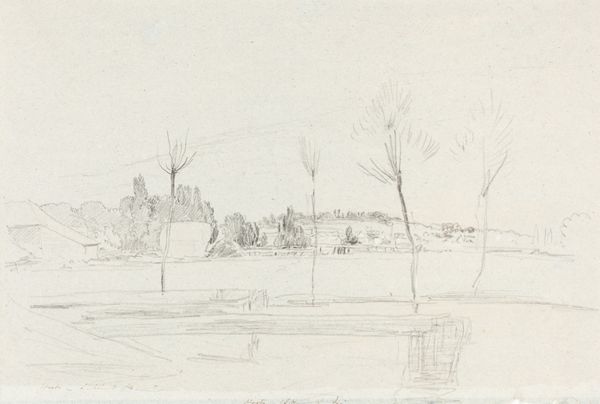
Copyright: Public Domain: Artvee
Editor: This is James McNeill Whistler's "Little London," an etching from around 1896. The cityscape, rendered in delicate lines, feels incredibly transient, almost like a fleeting memory of London. What do you see in this piece? Curator: Beyond the surface, the fleeting quality you mentioned resonates deeply. Etchings, with their linear precision, often depict permanence. Yet, Whistler dissolves London into a dreamlike vision. Notice how the architectural landmarks – St. Paul's Cathedral, for instance – are not rigidly defined, but soften into the atmosphere. Is that indicative of the London you recognise today? Editor: I suppose not really. Modern London feels so permanent. Almost imposing. So why this choice from Whistler, do you think? Curator: Whistler was interested in the ephemeral, the atmospheric. This depiction reminds us of "London Particulars", the thick fogs which literally dissolved the city! Here, he translates that experience into visual form. This ties into Symbolism's search for expressing interior states via exterior landscapes, don't you think? The city as a reflection of inner emotion and memory. Consider also that it’s from a suite entitled 'Thames Set.' That mighty river, always flowing, further reinforces themes of change. What feelings does the river evoke? Editor: A feeling of constant change but continuity, too. Even if the city changes around it. Whistler manages to evoke something essential about London, that survives even through immense transformations. Curator: Precisely! By softening the concrete details, Whistler accesses something deeper – the enduring spirit, or genius loci, of the place itself. We shouldn't see it so much as Little London but something essential, London’s soul, perhaps. Editor: I hadn't thought of it that way. It's much more evocative of a sense of place than I initially realized. Curator: Art's transformative power; from a record to an encapsulation.
Comments
No comments
Be the first to comment and join the conversation on the ultimate creative platform.

